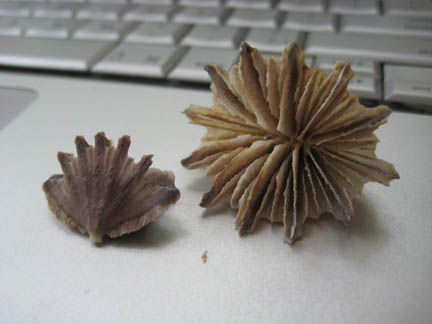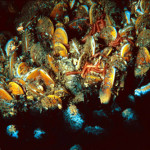

Of all the deep-sea animals, deep-sea corals have got to be the most interesting because they are iconic, and useful to a variety of disciplines, including biologists, oceanographers, and geologists. I’m not saying this just because I study the animals. They turn what we thought we knew about corals upside-down.
Deep-sea corals are not just tropical sea pansies. They love cold, dark, high latitude waters. They grow down to 8600 m from Tasmania to Norway. Deep-corals are more diverse and abundant than shallow tropical corals. Hydrozoan corals originated in the deep-sea and radiated into the shallows. Shallow Stylaster is an invader from the abyss. That’s iconic.
So, what comes to mind when you think of a "useful species". Lab rats? Zebrafish? They don’t tell you much about the ocean. But gorgonian corals and hard corals have growth-rings, like trees. Stable isotopes in these rings can be used to detect their food source. The rings can be used to age and date the organism, and to detect change in ocean chemistry over a colony’s life-span. The life span of a colony can be incredible. Radiocarbon studies indicate gold corals off Hawaii can be more than 2000 years old. Coral Week details a few reasons why "cool corals" are awesome marine invertebrates:
– they can survive a nuclear blast
– they range from 0 to 8500m depth
– they house the fastest known biological structure, the nematocyst
– they have their own week
– and, they can secrete a house from their butt polyps
To this I’ll add another recent finding- they can resurrect. Radiocarbon indicates a bamboo coral colony expired at one point, and the axis was re-colonized several years later, presumedly by planula larvae.
– PJE





